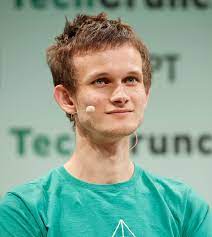Gavin and Vitalik on the same stage! As ten-year friends, how do they view Web3 now?
Author: PolkaWorld
On May 31, Gavin and Vitalik shared the stage for a fireside chat at the EthPrague event! They had some interesting interactions, discussing issues related to community, governance, incentives, and mass adoption! Below are the key points organized by PolkaWorld according to the host's questioning process!
Gavin's Explanation of Jam
- JAM is a version of Polkadot, but with fewer subjective opinions and removes the multi-chain requirements.
- JAM addresses some issues by eliminating the persistent fragmentation of state.
Vitalik's Response to the Growth of the Ethereum Ecosystem
The success of Ethereum lies in its knowledge ecosystem attracting many smart and interesting people.
Discussed the necessity for Ethereum to transition from theory to practice in the 2020s.
There is a need to adapt to user demands and create truly scalable applications.
Conflict and Community Building
Gavin's View:
Gavin hopes that conflict is not a necessary condition for community building, although some examples may suggest that conflict does indeed help in community building.
He believes that Ethereum's strength comes from a lack of internal conflict, and part of the reason the Ethereum community has been able to grow is that it has not been overly subjective.
Gavin thinks that reasonable and moderate governance, along with a lack of subjective opinions, helps to build a good community rather than creating a community through conflict.
Vitalik's View:
Vitalik mentioned that conflict can indeed lead to better outcomes in certain cases, as it prompts people to think seriously about issues and find a compromise between both sides, resulting in better solutions.
He believes that the presence of conflict sometimes motivates people to truly put in effort, overthink, and come up with clever ideas.
Vitalik also emphasized the need to find a way to gain this motivation while reducing mere arguments among people. He mentioned that Layer 2 and rollups are examples of how to handle conflict and drive progress in this way.
Competitiveness of L1 Chains
Gavin's View:
Gavin believes it is unimaginable to have a world where there is only one way to achieve a specific goal. He thinks it is necessary to have multiple different approaches and encourages these methods, as long as the costs are not too high.
He pointed out that Ethereum and Polkadot share a foundational narrative and a desire for ongoing work in many ways, but their paths are different. Polkadot had a more subjective path in the past, but over time, he has gained clearer insights through writing and thinking about the white paper.
Unfortunately, he thinks that most of the L1 competition currently observed is not between methods with the same fundamental values, but between methods with different values.
Vitalik's View:
Vitalik believes that competition between projects with different values is often very intense on social media, but there is little competition in actual operations.
Taking Bitcoin and Ethereum as examples, he believes that if Bitcoin were the only existing chain, or if Ethereum were the only existing chain, most people would not be satisfied. This indicates that they target different markets, thereby reducing competition.
Projects with similar values tend to be more competitive. This has also prompted his recent shift in thinking, making him more willing to explore Ethereum's specialization in different directions.
On-chain and Off-chain Governance
Gavin's View
Gavin remains very optimistic about on-chain governance and DAOs. He believes that decentralization is important not only in social governance but also in the number of validators in the network.
Regarding the governance of foundational layer technology and its evolution mechanism, Gavin thinks we may need some clear rules to govern overall evolution, but he does not believe that the actual foundational layer technology needs to upgrade autonomously. He stated that he might be closer to Vitalik's viewpoint on this issue.
Vitalik's View
Vitalik believes that foundational layer technology should strive to remain simple and neutral, not requiring frequent upgrades, nor should it become a target for upgrades or evolution.
Ethereum has generally done well in off-chain governance, but he is interested in adding some formal DAO-style governance elements, such as better public signaling tools, rather than directly setting hooks on-chain.
He mentioned that the Carbon Vote in 2016 and 2017 was an interesting example, where ETH holders could vote on whether some very controversial changes should occur. These were advisory votes, and no one was committed to following the voting results, but in practice, those results were followed.
Vitalik believes that now there are not only token votes but also various different ZKID technologies, identity verification, proof of participation, etc. He thinks that using these tools for polling can guide things in a more democratic direction, rather than relying solely on a vague consensus among a few developers.
Importance of Incentive Mechanisms
Gavin's View:
Gavin believes that to ensure the decentralization of expertise, not just the decentralization of datasets, we need to achieve this through cryptoeconomic incentive mechanisms.
He emphasized the importance of writing specifications and ensuring that multiple implementations are based on those specifications to decentralize the foundation of expertise.
He pointed out that providing the resources needed for experimentation is key in the early stages, while in later stages, to capture significant value, it may be necessary to establish value capture mechanisms. The structure of the ecosystem should be flexible enough to allow for this value capture to be feasible to some extent, without requiring projects to leave the entire ecosystem.
Vitalik's View:
Vitalik believes that there are indeed some important projects that are very valuable to the ecosystem, but the existing default incentive mechanisms do not encourage these projects well.
He pointed out that the Ethereum Foundation has significantly increased salaries over the past few years and has more projects funded independently of the foundation, such as Gitcoin grants and Optimism RPGF.
Vitalik believes there is a huge gap between early-stage and later-stage projects, where funding can be easily obtained in the early stages through various grants and friendly support, but once they grow to a certain stage, the incentive mechanisms suddenly change, requiring reliance on tokens and venture capital. He thinks this needs improvement to better handle successful ideas and projects.
He noted that market-driven incentive structures are more effective because the market should allocate resources based on the value of things. He believes that with a market-driven incentive structure, projects can continue to develop within the ecosystem without having to rely entirely on initial funding mechanisms.
User Question: Why is the Web3 industry still so irrelevant despite so much intellectual capital, social capital, and financial capital?
Gavin's View:
Gavin believes that current blockchain technologies and products are primarily technology and finance-oriented, which is not relevant to the average person. Most people do not have a technical or financial background, so these products do not meet their needs.
He thinks that the market will only truly grow when blockchain technology becomes relevant to the lives of ordinary people. Currently, it mainly targets those who understand the technical and social context.
While blockchain is useful in certain scenarios (such as buying coffee or international remittances), overall, it does not have practical significance for most people.
Vitalik's View:
Vitalik believes that the natural target market for blockchain technology is actually those "non-average" groups, as centralized infrastructure makes it very convenient for workflows that are used on a large scale. Existing applications and regulatory frameworks have already met these large-scale demands.
He pointed out that many actual use cases of cryptocurrencies are aimed at groups that existing institutions cannot effectively serve. For example, international payments are where he personally finds the most value, especially in developing countries, where the banking system is unwilling to expand the current centralized system.
Gavin then added: The systems in developing countries are more susceptible to corruption and inefficiency, making decentralized blockchain technology more relevant and valuable in these areas. The resilience of blockchain allows it to operate better in regions with weak structures and organizations, as well as higher noise and corruption.












